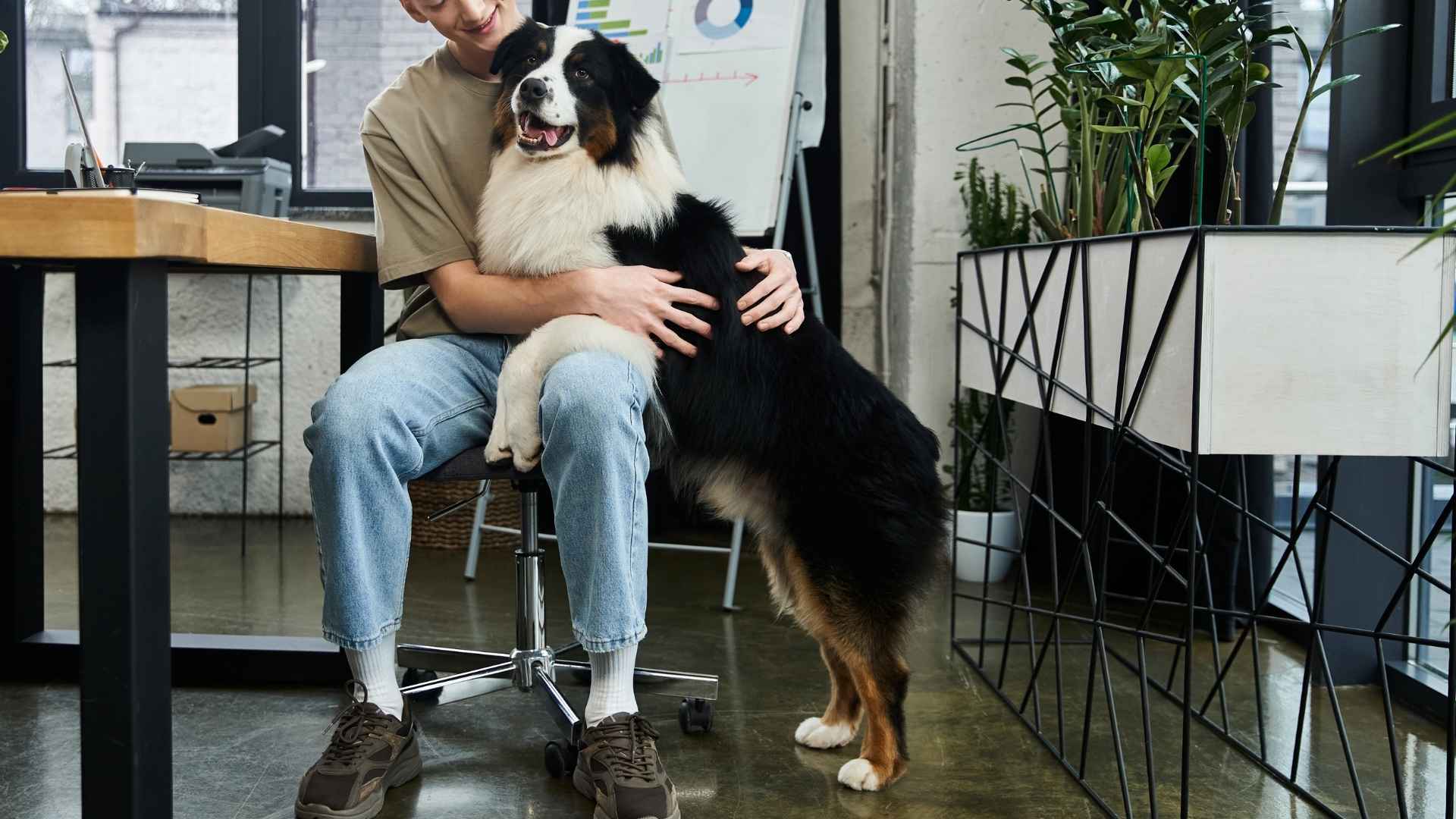Living with anxiety, depression, PTSD, or other mental health conditions can be challenging. However, emotional support animals, especially dogs, can provide deep comfort and emotional stability. These companion dogs are not the same as service dogs or therapy dogs, but they offer therapeutic benefits through unconditional love, affection, and presence.
Certain dog breeds are especially suited to indoor living and are known to provide emotional support effectively. They are small to medium in size, thrive in smaller spaces, and have a gentle nature. It makes them a perfect support dog for apartment dwellers or those needing a calming presence.
Below, we explore the best breeds for indoor emotional support, their unique traits, and why they are great emotional support animals.
Indoor Emotional Support Dog Breeds
1. Poodle
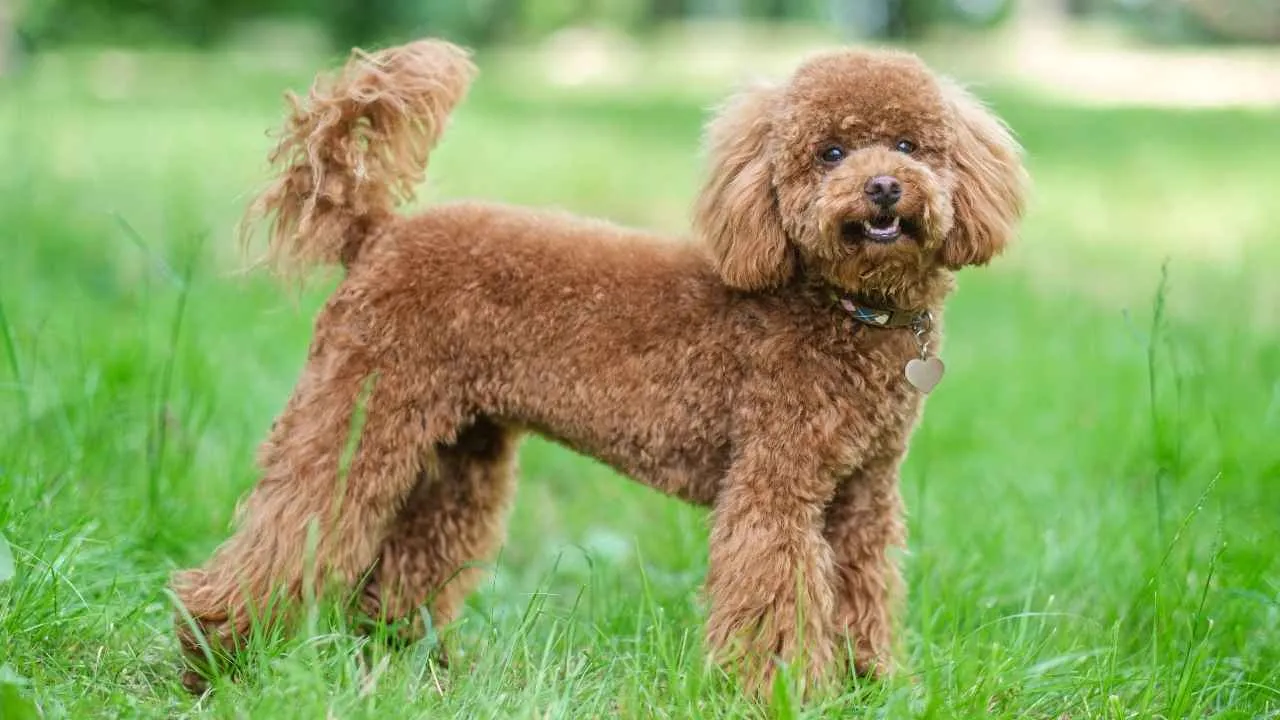
Poodles are among the most popular and excellent emotional support dogs due to their adaptability, high intelligence, and sensitivity to human emotions. Originating in Germany but standardized in France, they were originally bred as water retrievers, which is why they are also good working dogs.
They come in three distinct sizes. It makes them suitable for various lifestyles and living spaces:
Toy Poodle: Under 10 inches, weighs 4-6 lbs
Miniature Poodle: 10-15 inches, weighs 10-15 lbs
Standard Poodle: Over 15 inches, weighs 40-70 lbs
Traits that make them Ideal support dogs
Highly intelligent and trainable for specific tasks.
Thrive on physical and mental stimulation
A hypoallergenic coat is great for pet parents with allergies
Easily sense emotional cues, calming during panic attacks
Known for forming deep bonds and being incredibly loyal
According to AKC, these are not only elegant but also make great emotional support animals.
2. Cavalier King Charles Spaniel

The Cavalier King Charles spaniel is the embodiment of a classic lap dog, offering warmth, affection, and emotional comfort. It was bred in the United Kingdom as a companion for nobility. These dogs are known for their gentle nature and sweet expression.
Their small size and adaptable temperament make them ideal for indoor emotional support dog breeds.
Height: 12-13 inches
Weight: 13-18 pounds
Coat Variations: Blenheim, tricolor, ruby, and black & tan
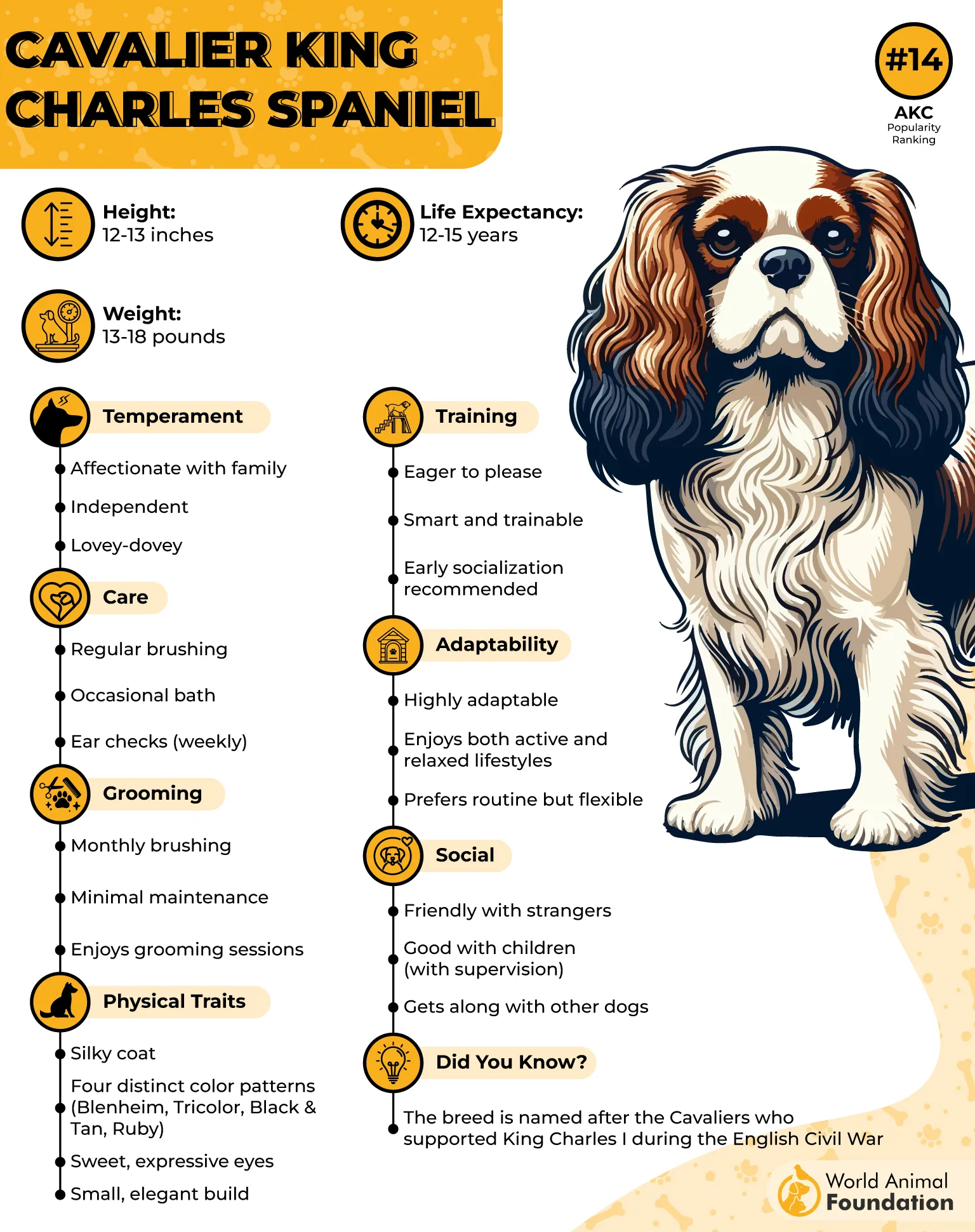
Why they make excellent emotional support animals
Extremely affectionate and attuned to human emotions
Thrive on emotional connection and constant closeness
Ideal for apartment living and smaller spaces
Require minimal exercise; short walks, and cuddle time are enough
Naturally social dogs, forming deep, lasting bonds
According to CKCSC, their calming presence makes them perfect for people dealing with mental issues. The AKC also ranks them highly as companion dogs.
3. Shih Tzus
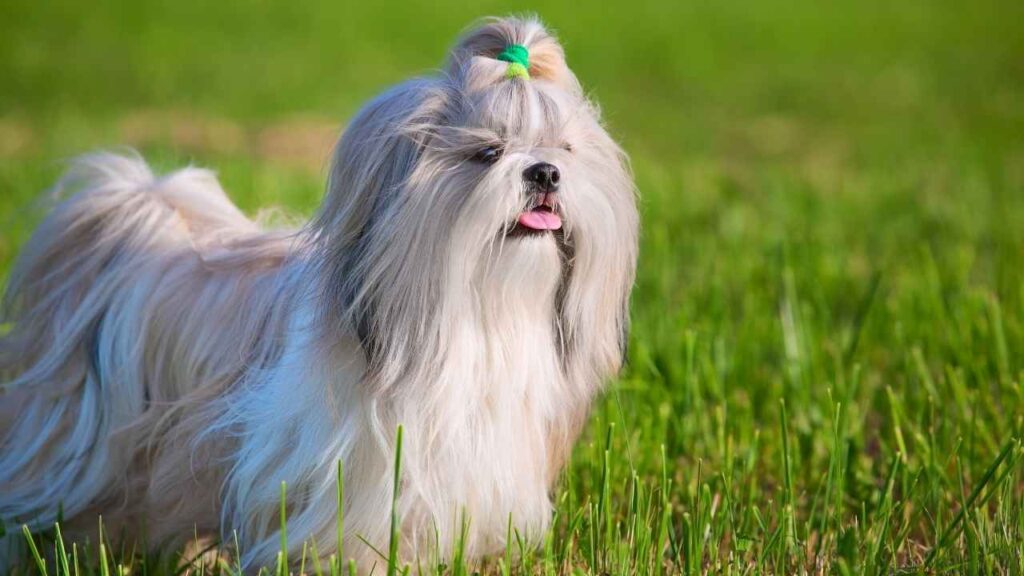
The shih tzus, whose name means “Lion Dog” in Mandarin, were originally developed as a palace companion for Chinese royalty during the Tang Dynasty. These charming little dogs are celebrated for their calming presence, loyal temperament, and ability to serve as emotional support animals.
Their size and laid-back demeanor make them ideal for indoor living and individuals seeking comfort without high activity needs.
Height: 9-10.5 Inches
Weight: 9-16 pounds
Coat Variations: Long, luxurious double coat in various colors.
Emotional Support Qualities
Needs minimal physical stimulation, perfect for low-activity homes
Extremely loyal and affectionate
Naturally in tune with human emotional cues
Adapts easily to smaller spaces and indoor life
Gets along well with other pets and other animals
Shih Tzus are mentally bright, curious, alert, and lively. While they don’t need much space, it’s important to give them enough room to play and explore to keep them happy and mentally stimulated.
4. Boston Terrier
The Boston Terrier, affectionately known as the “American Gentleman”, was bred in the United States in the late 1800s. A cross between the English Bulldog and White English Terrier, this breed is known for its charming personality, tuxedo-like coat, and naturally social nature.
Compact and adaptable, the Boston Terrier is a favorite among indoor dog breeds.
Height: 15-17 inches
Weight: 12-25 pounds
Coat Variations: Black & white, brindle & white, seal & white.
Why they’re great emotional support animals
Small size; perfect for apartment living
Playful yet sensitive, ideal for managing mental health disorders
Friendly with children, strangers, and other pets
Needs moderate physical stimulation, thrives on mental stimulation
Brings joy and help reduce anxiety with their upbeat temperament.
True to its Terrier roots, this breed is hardworking, highly trainable, and remarkably adaptable, while also showing a gentle and affectionate side. Like many terriers, they can occasionally be stubborn, but their charming personalities and loyal nature have earned them a special place in the hearts of many dog lovers.
5. Bichon Frise
The Bichon frise originated from the Mediterranean region and is popularized in France and Spain. It is a breed known for its merry disposition and affectionate nature. Often compared to a fully white cloud. The Bichon brings a cheerful, calming presence to any home, making it one of the best choices for emotional help.
Its small size and joyful personality make it ideal for indoor emotional help dogs.
Height: 9.5-11.5 inches
Weight: 12-18 pounds
Coat Variations: Curly white hypoallergenic coat
Why they’re an ideal emotional support pet dog
Small and portable, perfect for small house living
Brings emotional relief to those with disturbed mental conditions
Helps during anxiety attacks and depressive episodes
Needs regular grooming, but otherwise a low-maintenance breed.
The American Kennel Club AKC highlights this breed’s joyful nature. Their playful and curious nature provides a delightful source of distraction and joy, making them especially comforting for individuals in need of emotional support.
6. Maltese
The Maltese is a compassionate dog with ancient roots, originally developed in the Mediterranean for companionship. Revered for centuries by royalty, this breed remains a favorite for those seeking emotional support and gentle affection. Despite its glamorous look, the Maltese is a low-maintenance breed in terms of space and exercise needs.
- Height: 7-9 inches
- Weight: Under 7 pounds
- Coat Variations: Long, silky white coat requiring frequent brushing
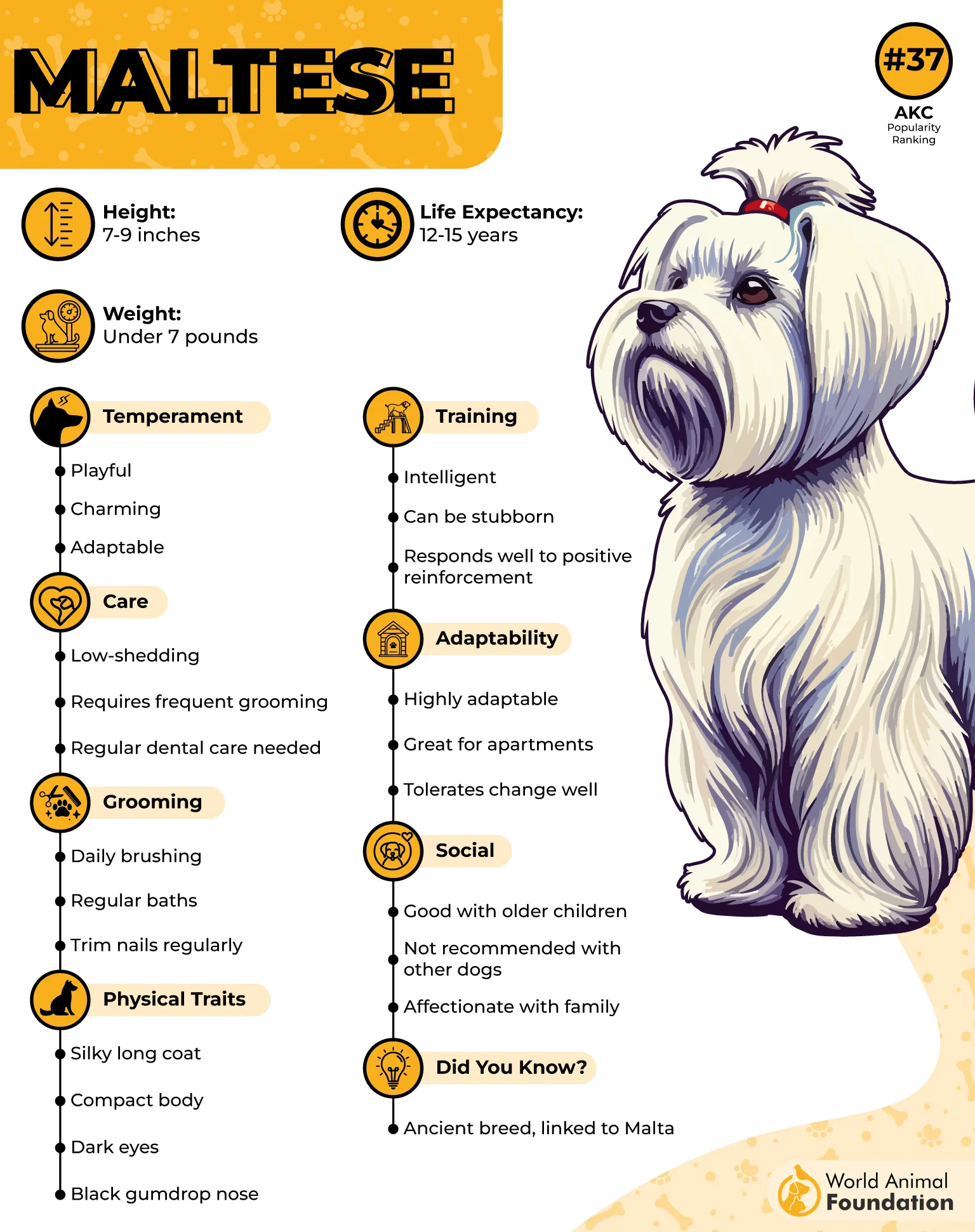
Why the Maltese is a top emotional help animal
Small, elegant, and perfect for pet ownership in apartments
Thrives in indoor environments and stays close to its owners
Possesses an innate ability to read and respond to emotional feelings.
Requires minimal physical exercise, ideal for those with limited mobility.
Regular grooming promotes bonding and offers tactile comfort
Not a high-energy breed; calm and soothing by nature
The Maltese is a lively, playful, and spirited companion that often thrives in a family setting, especially when engaged in learning tricks. Despite its petite frame, this breed carries a bold and fearless demeanor. While they can be snappy around overly rough or loud children, their alert nature makes them excellent watchdogs—quick to respond with enthusiastic barking at unfamiliar sounds.
7. Yorkshire Terrier
The Yorkshire Terrier, or “Yorkie,” may be tiny in size, but it has a fiercely loyal heart. It was bred in 19th-century England to catch rats in textile mills. Yorkies have since become beloved companion dogs for their emotional sensitivity and unique attachments.
Yorkies have a remarkable ability to sense their owners’ emotional changes, often offering comfort during times of stress or anxiety.
Height: 7-8 inches
Weight: 4-7 pounds
Coat Variations: Long, silky coat, blue and tan standard
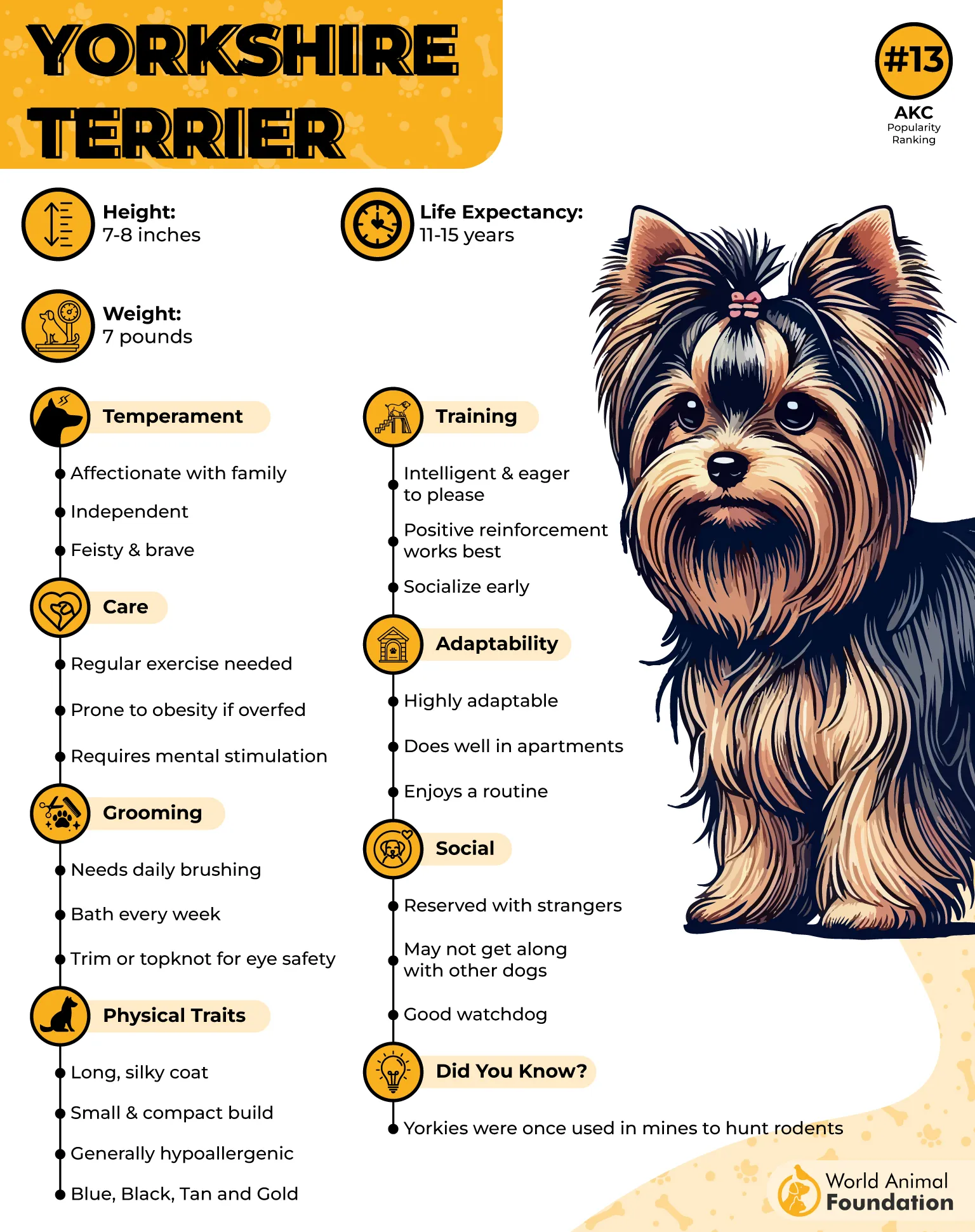
What makes Yorkies an ideal support dog
Excellent for living in small places due to size and adaptability
Offer unconditional love and emotional awareness
Low energy level, but still needs enough exercise for health
Responsive to emotional distress, great for people with mental health conditions
Less demanding than larger breeds, yet just as loving
With their small size and low-shedding coats, Yorkies are a convenient choice, especially for individuals with allergies or anxiety. Orvis notes that these spirited, brave little dogs carry themselves with confidence and energy, always ready for play. Yet despite their lively nature, they also cherish quiet moments and are just as happy curling up on the couch for some quality lap time.
Conclusion
Other than the different dogs highlighted above, there are many other options, like the clever poodle, the affectionate Cavalier King Charles spaniel, the Labrador retriever, or the devoted Yorkshire Terrier. They possess traits that make them the right dog for someone seeking emotional balance. These breeds aren’t just pets; they are compassionate dogs that significantly benefit people with mental issues.
Unlike service dogs or guide dogs trained for specific tasks or aiding those with physical disabilities, this offers healing through closeness, loyalty, and connection. You should choose the best dog for your lifestyle and needs. Always consult a licensed mental health professional for emotional support dog recommendations.
Golden retrievers and other larger breeds may also qualify, depending on space and activity level. And with proper care and specific training, these dogs can greatly improve your well-being.
Ultimately, these dogs are more than service animals; they are trusted companions who help restore emotional balance.


